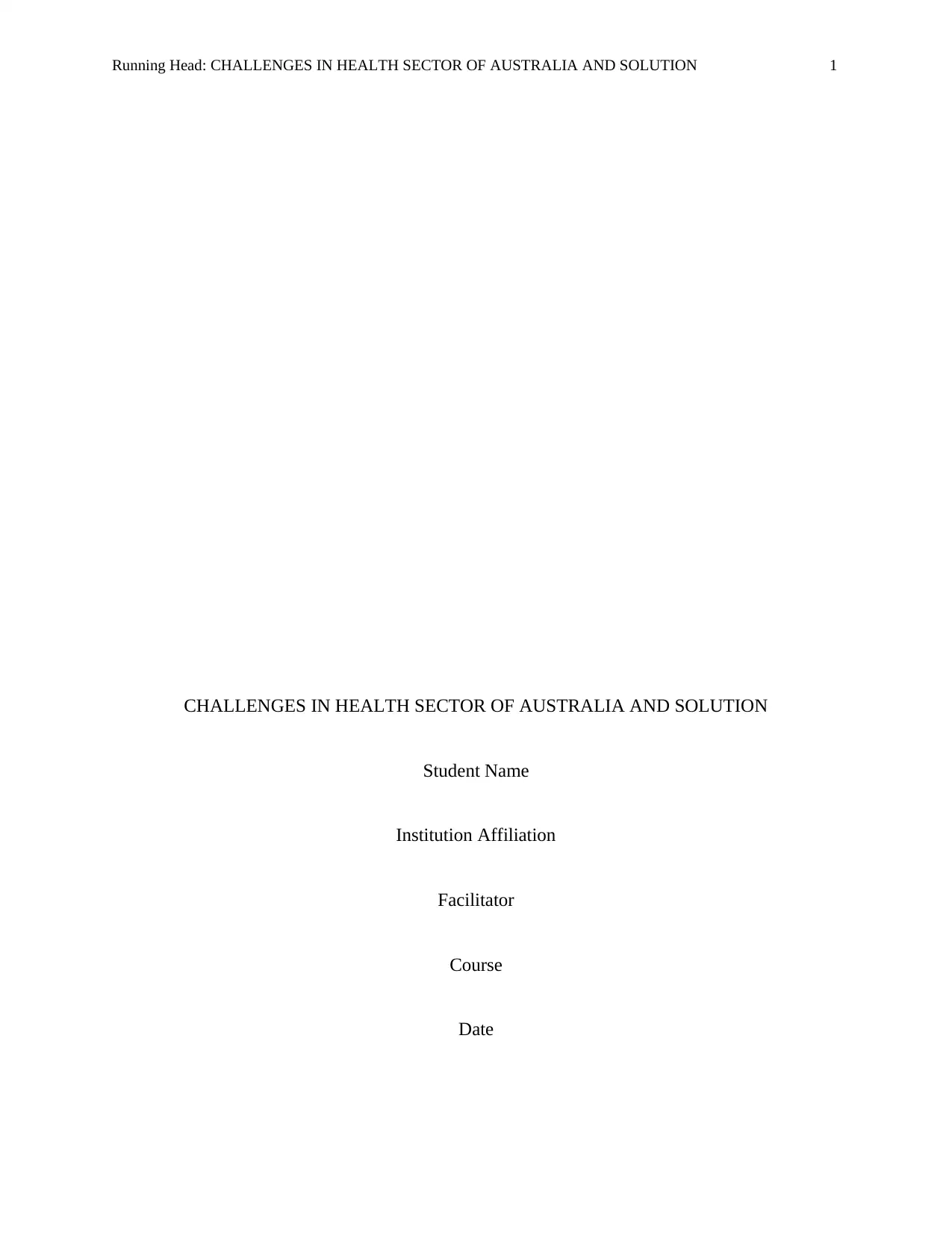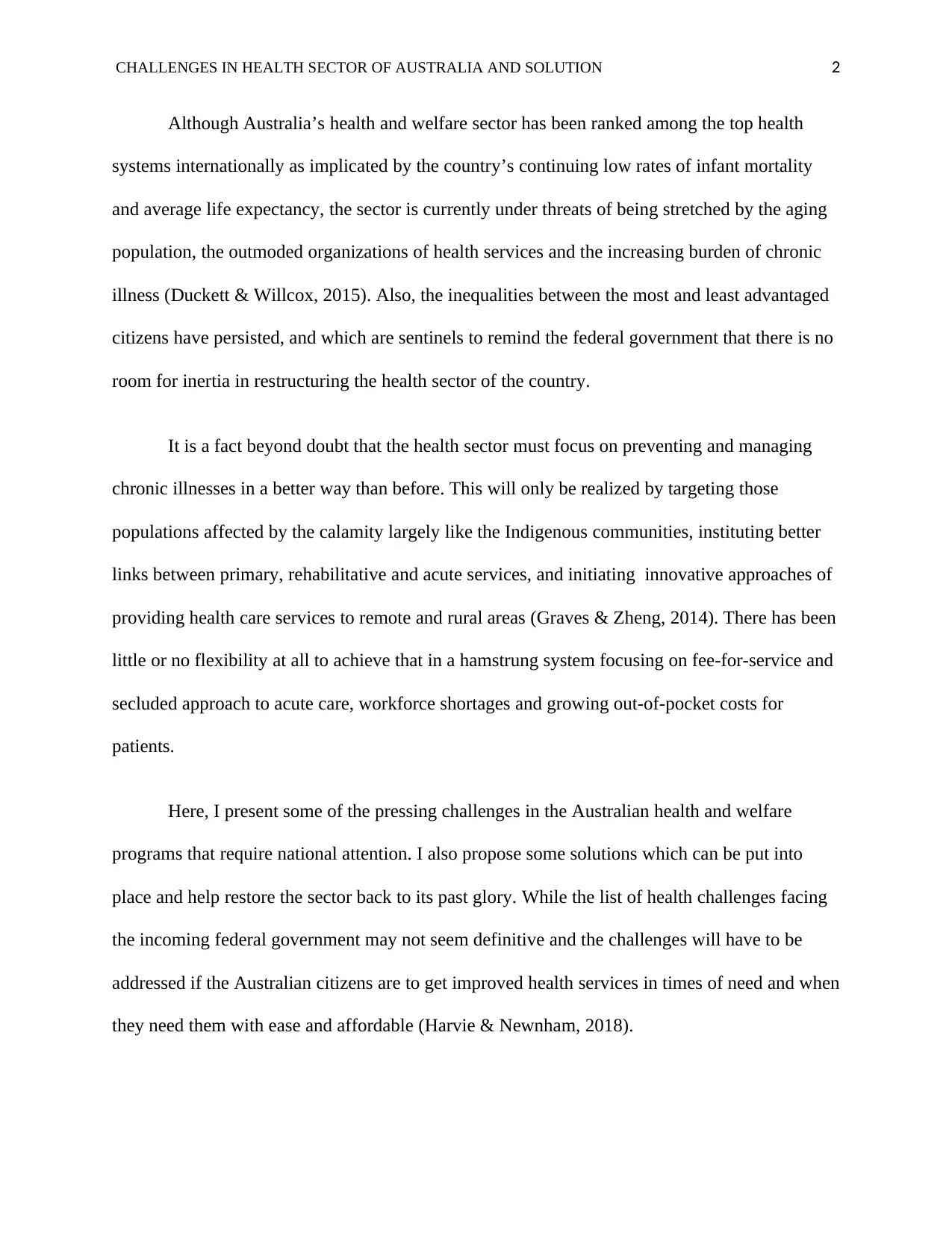Australian Health Sector: Challenges, Solutions, and Recommendations
VerifiedAdded on 2023/05/30
|4
|760
|121
Report
AI Summary
This report addresses the significant challenges currently faced by the Australian health sector, which, despite its high international ranking, is under pressure from an aging population, outdated service structures, and a growing burden of chronic illness. The report highlights issues like high out-of-pocket costs, particularly impacting rural and low-income citizens, and the need for improved management of chronic diseases, especially within Indigenous communities. Solutions proposed include expanding universal healthcare coverage to include dental care, increasing resource allocation to the health sector through more healthcare professionals, hospital constructions and equipment, and enhancing healthcare access in remote areas. The report acknowledges the need for careful consideration of the potential economic impacts of these solutions, such as budget cuts in other sectors like transportation.
1 out of 4











![[object Object]](/_next/static/media/star-bottom.7253800d.svg)